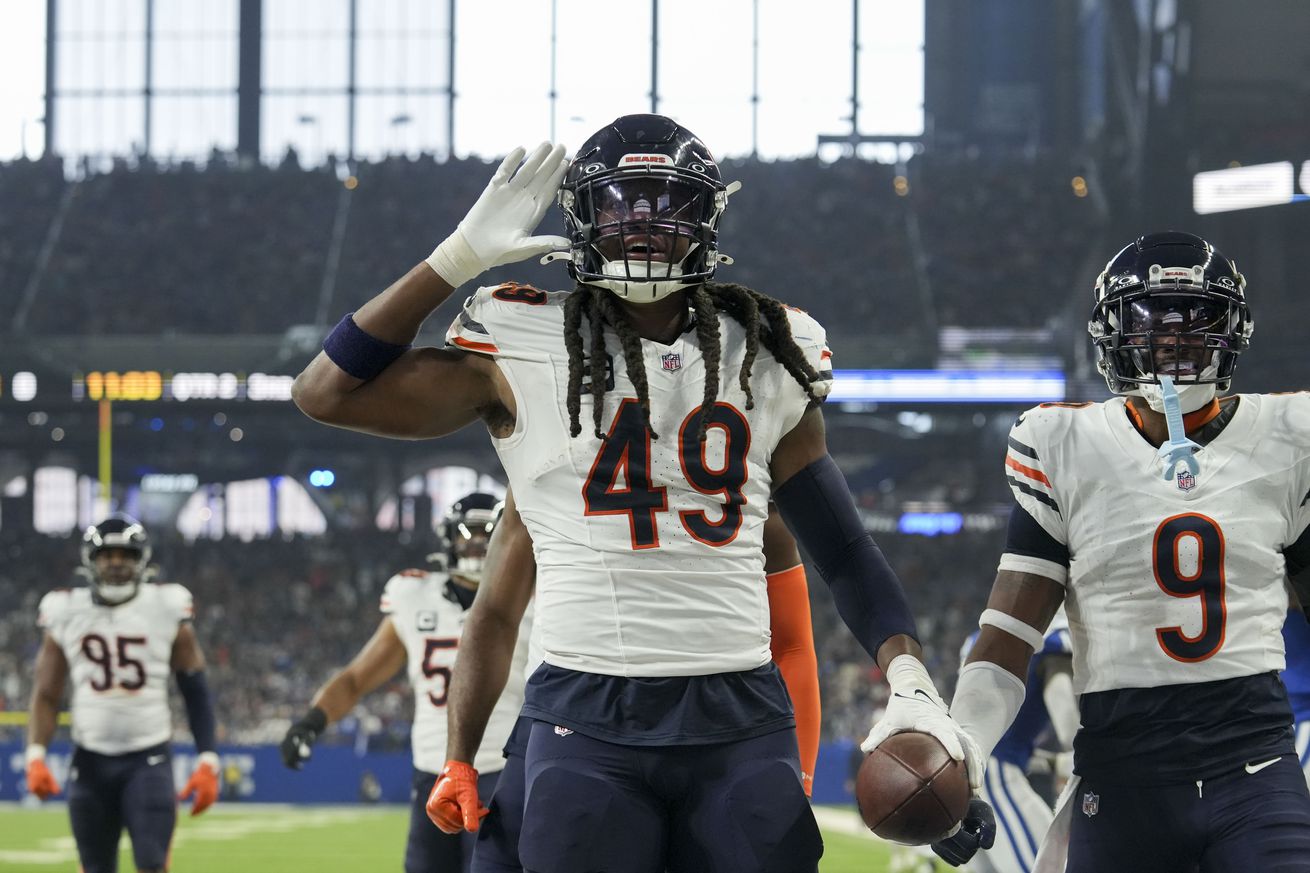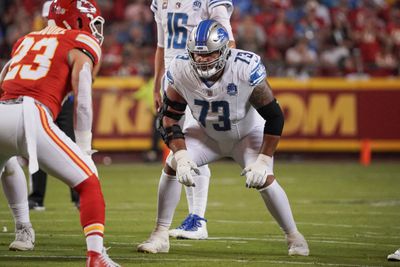
With the bulk of the 2025 NFL offseason in the rearview mirror and training camp still a month away from kicking off, we’ll take a look ahead into the future to see who could be on the chopping block next offseason.
We’ve officially reached the dead point in the offseason where there is little to do except count your offseason winnings and build expectations for the 2025 season. Outside of maybe the New England Patriots, no team has been busier this offseason than the Chicago Bears. They hired a brand new coaching staff, were highly active in free agency, and had four selections in the Top 62 in late April’s draft.
To say that 2024 was an underwhelming year would be an understatement. General manager Ryan Poles managed to retain his job and was allowed to hire a second head coach, despite winning just 15 games in three seasons. Following the hiring of a top candidate like Ben Johnson, the pressure to win has increased even more. Coming off the heels of a busy (and expensive) offseason, the team’s cap flexibility in 2026 will tighten up substantially. That means that cuts will become necessary, and tough decisions must be made. While we wait for training camp to get here, let’s look deeper into five players that could be on the chopping block for next year, barring a standout season.
Linebacker Tremaine Edmunds
Despite going into his eighth year in the league, Edmunds is still just 27 years old. That’s hard to believe, considering he was drafted in the same class as Roquan Smith. Following five seasons in Buffalo, Edmunds cashed in big when he signed a four-year, $72 million deal in Chicago.
Former head coach Matt Eberflus had envisioned Edmunds as the key piece to the middle of his defense, but things have not worked out as planned. Although it would be unfair to label him a “bad” player, he also hasn’t come close to living up to his $18 million per year price tag. With Eberflus being fired and Dennis Allen hired as the new defensive coordinator, his status beyond 2025 is tricky. The Bears prioritized a two-year extension with T.J. Edwards earlier in the offseason. This leaves the 27-year-old going into the final year of his deal next season with less than $2.5 million in dead money. Barring a surprise, it appears Edmunds will be playing his final season in Chicago.
Reasons For Keeping:
Having the middle of your defense bought and paid for is rarely a bad thing. Even if Edmunds doesn’t live up to his contract in 2025, keeping him and Edwards together for another season could establish continuity heading into Year 2 of Allen’s defense. Who knows, maybe he will become the new Demario Davis? Despite different skill sets, it’s not out of the realm of possibility that Edmunds is an ideal fit in this defense and could experience a career year.
Reasons For Leaving:
Money, underperformance, and scheme fit. Money will always play the most significant role in this equation. Still, it’s impossible to overlook the fact that Edmunds is the third-highest-paid linebacker in the league, and has yet to produce anything close to that when it comes to his play on the field. Whenever a new head coach arrives, there will always be questions about their fit. There have been some whispers that Edwards and Edmunds could swap spots, making the former the team’s new Will linebacker. That’ll take some adjustment, and again, could limit his ability to use his athletic skills. Only time will tell on the last two concerns, but having virtually no dead money and a significant cap savings is always a recipe for being a cut candidate.
Cap Ramifications:
(Pre or Post) June 1st Release: $15 million savings ($2.438 million dead)
Tight End Cole Kmet
I don’t count myself among those who believe that Kmet is automatically gone in 2026 after the selection of Colston Loveland. The two men play the same position but will be used in two different roles. Sure, Kmet’s role will decrease, as will his snap count. Even so, Johnson’s offense puts immense value on their top two tight ends, which means the 26-year-old still has an opportunity to prove his value and stay past 2025. For now, fans should stay in wait-and-see mode until we see how things pan out during the regular season.
Reasons For Keeping:
Tight end is not a premium position, but teams that have good ones usually don’t let them go. Assuming Loveland slides into the Sam LaPorta role, there’s still plenty of value for someone like Kmet as the inline tight end. For reference, Brock Wright averaged over 30 snaps per game. Unlike Wright, Kmet is a legit receiving option and should provide a young quarterback with another short and intermediate route option when they are in 12-personnel. If Johnson can find a way to make both players work, and Kmet continues to average around 500 yards, they might view that as enough value to continue paying him $11.6 million annually.
Reasons For Leaving:
Is it worth paying a TE2 $11.6 million in 2026? That’s highly debatable. Of course, this assumes that Loveland hits the ground running in his rookie season, just as LaPorta did in Detroit. Wright has averaged just over 100 yards in three of his four seasons. If Kmet’s role is reduced to anything resembling that, he’ll either have to take a pay cut or look for a new team next season. This will come down to value vs cost.
Cap Ramifications:
Pre-June 1st Release: $8.4 million savings ($3.2 million dead)
Post-June 1st Release: $10 million savings ($1.6 million dead)
Running Back D’Andre Swift
Following a disappointing season amid a free agent renaissance at the running back position, Swift has much to prove heading into the 2025 season. It was long speculated that the Bears would immediately attempt to upgrade the position early in the draft. Still, after failing to take a running back until the seventh round, Swift should get the opportunity to plead his case for a role in 2026. No one has ever questioned Swift’s play-making ability or home run capability. His vision and decision-making behind the line of scrimmage have been his most significant issue. It ultimately led the Lions to abandon the former second-round pick and send him to Philadelphia after completely reshaping that room in 2023.
Reasons For Keeping:
At his best, Swift is a quality weapon out of the backfield. He possesses the explosiveness to hit home runs and the ability as a receiver to be a factor in the passing game. Limiting his negative plays would go a long way in making him a valuable piece of a one-two punch. Swift’s best year came behind an elite line with the Eagles, and although the Bears aren’t there yet, it should be a much-improved product over what we saw last year.
Reasons For Leaving:
Swift wasn’t deemed an excellent fit for Johnson’s offense in Detroit, so why would it be different now? Financially, cutting him this year would make no sense, especially with the current depth chart. Barring a breakout year, Swift is likely on his way out the door in 2026. There’s some to like about Swift, but his lack of patience, vision, and ability to avoid losses are significant deterrents in Johnson’s offense.
Cap Ramifications:
(Pre and Post) June 1st Release: $7.5 million savings ($1.333 million dead)

Denny Medley-Imagn Images
Right Guard Jonah Jackson
Jackson hasn’t even played a game for the Bears yet, but he received a one-year extension. So, why would he be on this list? Simple. His cap hit. Last offseason, Jackson was one of a few free agent guards who received a hefty contract. Unlike the rest of that group, the Los Angeles Rams quickly moved off of him in Year 1 due to injuries. Jackson spent most of his rookie contract playing in Johnson’s offense in Detroit, which is why the acquisition makes sense.
At just 28 years old, Jackson should still have a few “prime” years left in the tank. Assuming he can stay healthy, he could be valuable to this offensive line for the next few years. Then again, his $25 million cap hit for 2026 might be a non-starter.
Reasons For Keeping:
Assuming Jackson can get back to the form in Detroit that led to him signing a lucrative three-year deal with the Rams last offseason, there’s plenty of value in having a Pro Bowl-caliber right guard on the roster. He knows Johnson’s offense and is a good fit for what the coaching staff is trying to do. His contract has plenty of flexibility, which could lead to another restructuring in 2026 to keep both sides happy.
Reasons For Leaving:
Money would be the most significant factor in the decision to cut ties. Still, beyond that, his limited availability in recent years and inconsistent play could also lead the Bears to look for an upgrade at this time next year. When Jackson is healthy and in the zone, he’s one of the better guards in the league. The issue is that he lacks consistency in both his play and ability to stay on the field.
Cap Ramifications:
Pre-June 1st Release: $3 million savings ($14 million dead)
Post-June 1st Release: $6.5 million savings ($10.5 million dead)
Kicker Cairo Santos
Since rejoining the Bears in 2020, Santos has posted three years of field goal percentages above 90%. 2024 was a down year for the 33-year-old, but that argument could be made for the entire team. Distance has been an issue since his return from the injury that ultimately led to his ouster in Kansas City, in favor of Harrison Butker. Although Santos has a career-long streak of 55 yards, he struggles from beyond 50 yards when the weather starts to cool down. That could be an issue for an aspiring playoff team that plays primarily outdoors. That’s not to diminish how good he’s been from within 40 yards, but distance plays a big part in today’s kicking game. With two years remaining on his contract, the quest to prove he can still perform at a high level begins in 2025.
Reasons For Keeping:
All in all, Santos has been one of the more reliable kickers over the past five seasons. Despite somewhat of a down season in 2024, he was 8-of-9 from 50+. The veteran kicker has been a steady presence in a turbulent locker room over the past few seasons, and he’s still firmly in the category of needing to be blown away by an outside camp body to lose his job.
Reasons For Leaving:
Lack of range and age are two significant factors that will impact Santos moving forward. We’ve seen a particular variance in kickers each year, but he’ll be 34 halfway through the season, and there are plenty of reasons to wonder how effective he’ll continue to be in longer kick situations. Assuming the Bears can secure a playoff spot, range will become a factor in January, when it’s much colder than it would be in September or October. We’ll see how long of a leash Johnson and his staff give the veteran.
Cap Ramifications:
Pre-June 1st Release: $2.64 million savings ($1.12 million dead)
Post-June 1st Release: $3.2 million savings ($560,000 dead)